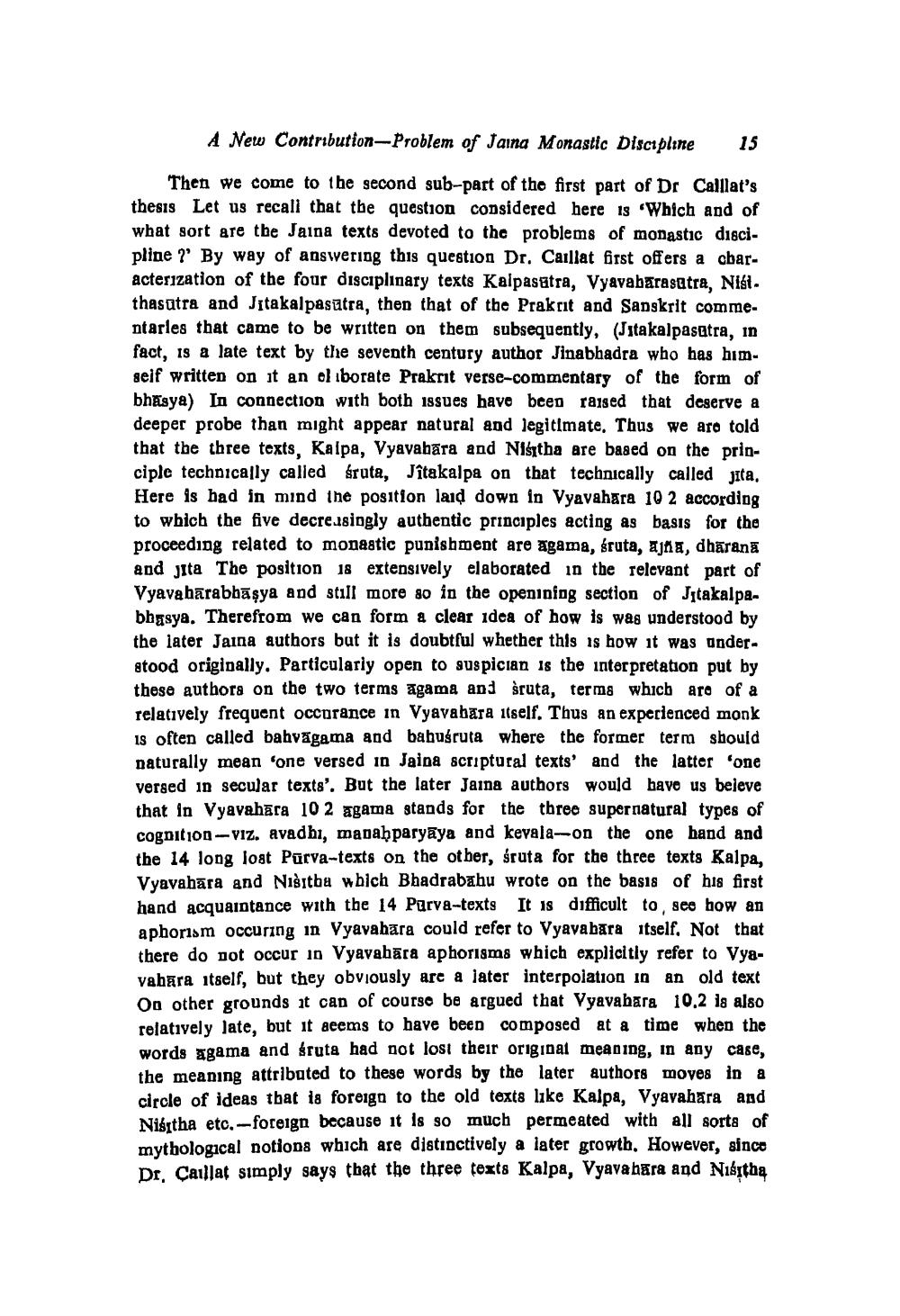________________
A New Contribution-Problem of Jaing Monastic Discipline
15
Then we come to the second sub-part of the first part of Dr Calllat's thesis Let us recall that the question considered here is "Which and of what sort are the Jaina texts devoted to the problems of monastic discipline ?" By way of answering this question Dr. Caillat first offers a cbaracterization of the four disciplinary texts Kalpasutra, Vyavabarasutra, Nist. thasutra and Jitakalpasutra, then that of the Prakrit and Sanskrit commentarles that came to be written on them subsequently, (Jitakalpasatra, in fact, is a late text by the seventh century author Jinabhadra who has himseif written on it an el iborate Prakrit verse-commentary of the form of bhasya) In connection with both issues have been raised that deserve a deeper probe than might appear natural and legitimate. Thus we are told that the three texts, Kalpa, Vyavahāra and Nišitha are based on the priociple technically called śruta, Jîtakalpa on that technically called jita, Here is had in mind the position laid down in Vyavahara 10 2 according to which the five decreusingly authentic principles acting as basis for the proceeding related to monastic punishment are agama, śruta, ajna, dhārana and jita The position 18 extensively elaborated in the relevant part of Vyavabārabbaşya and still more so in the openining section of Jitakalpabhasya. Therefrom we can form a clear idea of how is was understood by the later Jaina authors but it is doubtful whether this is how it was anderstood originally. Particulariy open to suspician is the interpretation put by these authors on the two terms agama and sruta, terms which are of a relatively frequent occurance in Vyavabara itself. Thus an experienced monk is often called bahvagama and babuśruta where the former term should naturally mean 'one versed in Jaina scriptural texts' and the latter 'one versed in secular texts'. But the later Jaina authors would have us beleve that in Vyavahara 10 2 agama stands for the three supernatural types of cognition ---Viz. avadhi, mapahparyāya and kevala--on the one hand and the 14 long lost Purva-texts on the other, śruta for the three texts Kalpa, Vyavahāra and Nišitba wbich Bhadrababu wrote on the basis of his first hand acquaintance with the 14 Purva-texts It 18 difficult to see how an aphorism occuring in Vyavabara could refer to Vyavabara itself, Not that there do not occur in Vyavahāra aphorisms which explicitly refer to Vyavahera itself, but they obviously are a later interpolation in an old text On other grounds it can of course be argued that Vyavabara 10.2 is also relatively late, but it seems to have been composed at a time when the words agama and fruta had not lost their original meaning, in any case, the meaning attributed to these words by the later authors moves in a circle of ideas that is foreign to the old toxts like Kalpa, Vyavahara and Nistha etc.- foreign because it is so much permeated with all sorts of mythological notions which are distinctively a later growth. However, since Dr. Caillat simply says that the three texts Kalpa, Vyavabära and Nikitha




